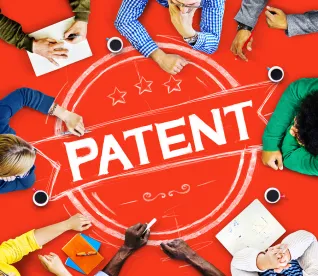On August 2nd 2017, the USPTO hosted a Bicoastal Biotechnology/Chemical/Pharmaceutical Customer Partnership that focused on the USPTO’s current thinking on patent-eligibility. The meeting followed the USPTO’s June 25th, 2017 publication of its report “Patent Eligible Subject Matter: Report on Views and Recommendations from the Public” (“Report”) which summarized the case law, international approaches to defining patent eligible subject matter and the public’s view on patent-eligible subject matter.
Subject Matter Eligibility From the USPTO’s Perspective
Dr. Daniel Kolker, Supervisory Patent Examiner, TC 1600, summarized trends in Section 101 examination, claiming strategies, and successful arguments to avoid or overcome a Section 101 rejection. From the USPTO’s perspective, the PTO’s December 2014 Interim Guidance is the controlling resource document for the pubic and PTO examiners.
The Guidance set forth the Alice/Mayo two-part test for determining patent eligibility:
Step 1: Is the claim drawn to one of the four statutory categories of eligible subject matter?
Step 2A: Is the claim directed to a judicial exception?
Step 2B: If the answer to Step 2A is yes, then do the claim elements add significantly more to the judicial exception?
Based on this analysis, Dr. Kolker explained that based on the Alice/Mayo two-part test, applicants have two options for establishing eligibility: drafting a claim that does not recite a judicial exception, or if the claim does recite a judicial exception, reciting claim elements that add “something more” to the judicial exception.
Claiming Diagnostic Inventions
Diagnostic method claims in personalized medicine often recite a judicial exception because the claims typically correlate the presence or absence of a biological marker or clinical measurement to a diagnosis, prognosis or preferred treatment. Thus, for claims that recite an abstract idea or natural phenomenon (the correlation step), removing the element defining the correlation or abstract idea from the claims will take the claim out of the recitation of the judicial exception and preclude a rejection for lack of patent-eligibility. Thus, the claim may now be directed to a method of detecting a marker of significance, without the ultimate correlation to the diagnosis, disease or preferred treatment. In some instances, this option is not possible due to prior art that discloses detection of the marker, especially in the patient population.
Where the claim must recite a judicial exception, a case why the claim elements, individually or in combination, add significantly more to the judicial exception (Step 2B) must be made. Examiners may reject the additional elements in the claim as not “something more” because they are routine and conventional in the art. However, such assertions must be substantiated by the examiner, typically by citing a technical publication. Patent applicants may rebut this evidence by providing contrary evidence, perhaps by way of declaratory statement by an expert in the relevant art, that the additional elements are not in fact routine and conventional.
For multivariate diagnostic methods, the “something more” could be established if the combination of markers provides a different or more precise diagnosis that could be established by the use of a single marker alone. In addition or alternatively, the method itself might utilize steps or techniques that are not routinely combined, to provide an enhanced or novel outcome.
In addition, when the method directs a physician to select a therapy or treatment option, the addition of the treatment step to the claim may be a strategy to overcome a lack of patent-eligibility rejection, provided the treatment itself is not too generic.
Products of Nature
Natural products, for example isolated nucleic acids, proteins and stem cells, provide significant challenges under the new guidelines, as the therapeutic value of many of these inventions lies in its similarity to a natural product. Under the 2-part analysis, patent-eligibility can be established if there are features or characteristics that distinguish the claimed product from its natural counterpart. A possible strategy is to add new claim elements that provide features that distinguish the claimed invention from the natural product. For example, claiming the product as a composition that contains additional elements such as preservatives or stabilizers can provide the claimed product with distinguishing characteristics or features. For example, the addition of additional peptides to a protein or peptide fragment may enhance solubility or cell penetration, and thus may provide the markedly different characteristics to establish the combination as patent-eligible.
The New Reality
There is no doubt that obtaining patent protection for life science inventions is more challenging in light of the US Supreme Court’s recent 101 jurisprudence. However, that is not to say that patenting is precluded. The preceding strategies as suggested by the USPTO provide useful avenues to move beyond the current challenges.




 />i
/>i

